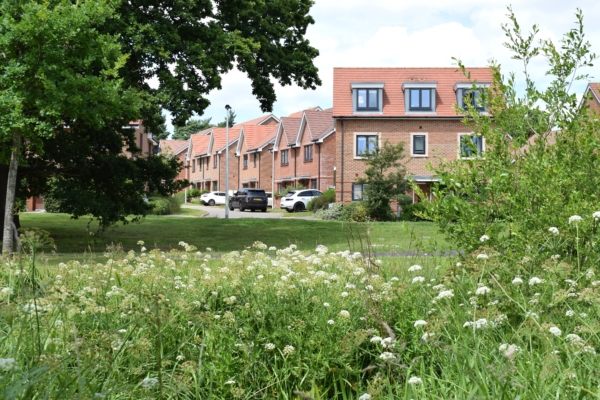When does the requirement to provide 10% BNG bite?
Cornerstone Climate, Planning and Environment

By Josef Cannon KC and Nina Pindham
Recent judicial clarity has resolved – at least for now – an important potential teething problem for the mandatory biodiversity net gain (“BNG”) regime. Josef Cannon KC and Nina Pindham summarise the decision.
Requirement of 10% BNG
The requirement to deliver 10% BNG has been in force for more than a year, applying a mandatory condition to that effect to all qualifying developments for which planning applications were made on or after 12 February 2024. For applications made before that date, the obligation does not apply, by virtue of Regulation 3 of the Environment Act 2021 (Commencement No.8 and Transitional Provisions) Regulations 2024:
“The [obligation to impose the biodiversity gain planning condition] does not apply in relation to a planning permission…where the application for planning permission was made before 12 February 2024.”
Key Facts
-
Mandatory Biodiversity Net Gain (BNG): A 10% BNG requirement applies to planning applications made on or after 12 February 2024.
-
Legal Question: What counts as the date an application is “made” under the BNG regime?
-
Case: Westchurch Homes Ltd applied on 11 January 2024, but their application was invalid until 18 April 2024.
-
Challenge: Morris Homes Ltd argued the BNG should apply, as the application wasn’t valid until after the cut-off.
-
Judgment: HHJ Bird ruled that once made valid, the application is treated as valid from its original receipt date.
-
Precedent Cited: Camden LBC v ADC Estates Ltd (1991) confirmed the approach.
-
Outcome: Judicial review was refused
The word “made” in that provision is not defined. Predictably, this became important when Westchurch Homes Limited (“Westchurch”) applied for planning permission for 133 new affordable homes in Bolton, on 11 January 2024 – or at least that was the day it was received by the LPA. However, it was deficient, and was not validated by Bolton until 18 April 2024, after Westchurch had submitted further documents. It was determined on 3 October 2024, with permission granted, but without the biodiversity gain condition applied.
Judicial Review
Another developer, Morris Homes Limited, sought judicial review of the decision to grant permission without the condition being applied. They argued that it should have been applied because the application was not “made” until after 12 February 2024, given that it was not validated until April (and there was no dispute but that when it was received by the LPA, it was deficient).
The LPA resisted that, arguing that the application was “made” when it was received, despite its lack of validity at that point, and was later made valid.
The matter came before HHJ Bird as an application orally to renew the question of permission, a refusal on the papers having been previously handed down. Having reviewed the authorities on when planning applications are “made” in other contexts, HHJ Bird came down decisively in favour of the LPA’s arguments: because once an invalid application is made valid and validated, it is treated as having been made from the date it was received:
“It seems to me that any application, no matter how flawed, is capable of being saved by the provision of correct documentation. Once the correct documents are provided, and the application is valid, the application is treated as valid from the point it was made.”
Holding that he was (a) bound by the decision in Camden LBC v ADC Estates Ltd (1991) 61 P&CR 48 and (b) even if he were not, would come to the same conclusion, he refused permission for judicial review.
Two potential wrinkles: first, we understand that the Claimant has applied to the Court of Appeal for permission to appeal HHJ Bird’s ruling.
Second, and thanks to Ed Church at South and Vale for this, the effect of the regime is that the BNG condition is applied to qualifying permissions by operation of law: it is deemed to be applied. The PPG says in terms (paragraph 024 of the BNG chapter) that to avoid confusion, LPAs should not include the condition on its published permissions. However, the next paragraph (025) reminds LPAs that where the BNG condition applies, they are required to provide specified information about BNG in the decision notice (see Article 35 of the DMPO). In this case the LPA did not provide that information, no doubt because of the stance they took (and upheld by the Court) about whether the application qualified.
The decision is available here.
About the authors
Josef Cannon KC advises and represents all sides in town & country planning and environment matters and is recognised as a leading planning silk in Chambers & Partners and the Legal 500.
Nina Pindham has a wide-ranging planning practice specialising in environmental law matters in the context of planning applications. She is the author of A Practical Guide to Biodiversity Net Gain.


